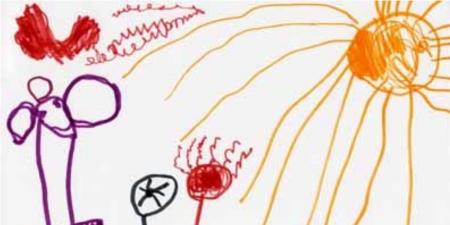The return to the microethical world of medicine will mean…the explicit reestablishment of the clinical relationship at the center of medicine. Ethics is what happens in every interaction between every doctor and every patient.
Paul Komesaroff [1]
I write this as a medical educator who has been immersed for the past 8 years in developing and implementing educational activities designed to improve the care of children with life-threatening conditions and their families. In response to the Institute of Medicine report When Children Die [2], which called for educational efforts to improve the knowledge, attitudes, and skills of clinicians who work with this population, our team from the Initiative for Pediatric Palliative Care (IPPC) developed a comprehensive, interdisciplinary curriculum [3]. In the most recent phase of the initiative, we have been conducting educational retreats in which clinicians from hospitals, hospice and home care organizations, and community coalitions come together with bereaved parents to learn from each other; to date, more than 2,000 practitioners and 200 family members have participated in these events [4]. In collaboration with colleagues at the Institute for Professionalism and Ethical Practice (IPEP) at Children’s Hospital Boston, we also developed an innovative workshop for helping clinicians engage in challenging end-of-life conversations in the pediatric intensive care unit. The workshop is now part of a large portfolio of programs focused on difficult conversations in a wide range of adult and pediatric health care settings [5-7].
In this commentary, I will (1) explain our pedagogical approach, (2) describe the microethical and relational insights we have gained from our work with bereaved parents and clinicians who care for critically ill children and how these are relevant to problems in mainstream medicine, and (3) offer an example of how these insights have informed one of our current initiatives—helping health care systems address the prevalence and impact of medical errors and better respond to patients and families when mistakes occur.
As educators, our primary concern in all of these learning endeavors is the microethics of clinical and organizational practice [8]. Our pedagogical approach incorporates several strategies: creating a safe and hospitable learning environment; bringing together clinicians of different disciplines and varying levels of experience; incorporating the patient and family perspective in salient ways; emphasizing whole-person learning that integrates cognitive, emotional, and spiritual knowledge; encouraging the expression of multiple perspectives; and leveling the hierarchy among learners [5, 9]. Our “experience-near” focus—deconstructing practice from the inside out—stands in marked contrast to more abstract and “experience-distant,” theory-based approaches that tend to shape education in medical cultures. Our outcome research thus far indicates that our pedagogical approach is making a positive difference on the levels of both clinical [6] and organizational [4] practice.
The work of the IPPC team and our initial IPEP programs focused exclusively on the education of clinicians who work with children with life-threatening conditions and their families—a particularly vulnerable and historically poorly served population. In light of this, perhaps the most intriguing aspect in the evolution of our work has been the number of requests we have received to design learning initiatives to address challenges in mainstream medicine, such as improving patient safety and quality, reducing medical errors, and addressing the fragmentation of care and communication experienced by patients and families coping with complex and chronic health conditions. Many of these challenges fall into the category of “wicked problems” [10], a term used by organizational theorists to describe problems that are especially difficult to solve because they develop in particular organizational contexts, are constantly evolving, and are held in place by the thoughts and actions of many individuals with disparate perspectives. Applying what we have learned in pediatric palliative care to mainstream medicine, I offer this working hypothesis: To effectively tackle wicked problems in contemporary health care, we will need to take a closer look at the relational and microethical aspects of everyday practice and cultivate robust organizational learning innovations that bring these challenges to light and provide collaborative frameworks for crafting solutions.
The Moral and Relational Landscape of Pediatric Palliative Care
Clinicians on the shop floor come to think of ethics in terms of prescribed tasks, such as getting consent, rather than as the ongoing work of being ethical. . . ethics becomes a set of procedures performed in accountable ways. Those procedures are often better than nothing, but their danger is that they can cut off the continuing development of a truly ethical culture of clinical practice.
Arthur W. Frank [11]
In bioethics, we can tend to forget that medicine is about the problem of human suffering, that human loss is not a failure to be managed, but a tragedy in which we are the witnesses and the community of response. We forget this concept at our own moral peril.
Laurie Zoloth [12]
In our many conversations with bereaved parents who have navigated the medical system over extended stretches of time, we have learned how essential caring relationships are to the process of parenting a critically ill child and to the grieving process following a child’s death. Consider the following comments made by parents interviewed for short films we produced as part of our pediatric palliative care curriculum. Their words show how and why relationships with health care professionals matter so much to patients and families [13]:
Doctors should be more patient with parents. We had so many questions. They should spend more time with parents in these situations—we are going through these horrible moments in our lives.
You need nurses that care. If you want that kind of job, you got to have that kind of caring. We need them—somebody that caresabout us.
When she died, all the health care support disappeared. All the health care relationships just stopped. I don’t know how the health care system allows that to happen.
Listen, just listen and dig deep into what we’re saying. Be concerned about what we’re saying. That’s the kind of doctor to be. Not just a doctor that understands big words, doctor talk, whatever. Because they got to meet all kinds, like me. You got to understand me. I know my child better than you do.
Similarly, from listening to many hundreds of clinicians who work with these parents and children, we have a better understanding of how relationships matter from their side of the equation. One example [14]:
Sometimes I feel pressure about “getting it right.” It’s not about getting it right. It’s not how “professional” I am. It’s how I respond to this family as a human being, if I’m not sincere, that is what families will remember the longest. It’s not really what I say, but more how I am, how I can be with them at the time.
Choosing the career of caring for critically ill children and their families can bring extraordinary rewards as well as real burdens into the lives of health care professionals. Clinicians describe experiences that have enriched their lives forever; they also share troubling accounts of the moral distress [15, 16] that ensues when, for a variety of reasons, their caring bonds with patients and families is endangered or ruptured.
In the world of clinical ethics, there is an important body of theoretical knowledge that informs professional behavior as clinicians strive to discern and respond to the complex dilemmas that emerge in practice. Thinking through and applying such important ethical principles as respect for autonomy, beneficence, nonmaleficence, and justice are important competencies. Practitioners and health care organizations alike need methods for holding themselves accountable in the carrying out of professional duties and fiduciary obligations. In busy health care settings, however, more expedient microethics, shaped by institutional needs, also can predominate: the anesthesiologist whose workload requires her to rush through a 7-minute meeting to obtain patient or surrogate consent prior to a life-threatening operation, or the social worker hurriedly assigned by his team leader to “get the DNR” from a despairing family.
Universal human standards. Meanwhile, patients and family members, when asked to describe their experiences, tend to approach the topic from a different vantage point. What matters to them as laypersons are workaday human standards like being fair, treating others with respect (in the way you might wish them to treat you), being the best caregiver one can be and discerning the right thing to do in any given situation. When bereaved parents, for example, are asked about how they approached extraordinarily complex and overwhelming end-of-life decisions concerning their child [17], they often describe a kind of moral “bricolage” [18]—a heedful digging into one’s life experience and relational world for tools, resources, and moral insight, which, patched together, might allow one to figure out what to do next. These parents also tell us, almost universally, that one of their most pressing worries during their child’s illness was whether they would “measure up”—whether they could decipher how, under at times unbearable conditions, to become the best parents they could be.
Though it may not seem evident at first glance, clinicians live within the same moral universe as patients and family members. When faced with difficult decisions they, too, are moral bricoleurs of a sort, cobbling together knowledge and insight from a variety of sources in order to find a way forward. In the same way that family members measure their own moral worth as caregivers, many clinicians go home at the end of a tough day, look at themselves in the mirror, and hope to meet in their reflection the best doctor, nurse, or social worker they could be on that particular day. Sadly, such elemental matters of personal and professional integrity are rarely examined explicitly in medical settings. These everyday ethics of clinicians typically remain underground unless health care leaders make a conscious effort, in the interest of professional development and ongoing learning, to coax them into the light of day.
Who gets heard. Another key microethical challenge in health care settings is the question of whose voices get heard. Bereaved parents involved in our pediatric palliative care initiative frequently describe the disabling effects of having felt, at key junctures in their health care travels, that their hard-won, intimate knowledge about their child was insufficiently valued or simply ignored by health care professionals. Examples include a parent’s intuitive assessment of what a particular grimace tells them about their child’s pain, their knowledge of their child’s spiritual needs and preferences, or their suggestions as to the best way of communicating with their child. In these instances, the knowledge that most needs to be brought to the surface cannot, seemingly, be recognized. This is a sad irony, since the bringing together of parental expertise and medical expertise is, generally speaking, the sine qua non of optimal care for pediatric patients.
We hear parallel accounts from clinicians about their important knowledge that never finds the light of day: a bedside nurse who is afraid to say anything in a team meeting when a family to whom she is assigned is being talked about in a disparaging way; a young resident who consistently feels her attending physician communicates with families in a controlling and insensitive manner, but cannot say anything for fear of jeopardizing her own professional advancement; a veteran social worker who finds it disheartening when, after attending a lunchtime workshop on improving teamwork, he returns to the ward to overhear co-workers heatedly complaining about problematic dynamics with colleagues that will never be discussed openly in an interdisciplinary context.
These troubling microethical vignettes are drawn from our work in the world of pediatric palliative care. They describe problematic dynamics that are unique to the particular settings in which they happen, yet they are, at the same time, recognizable in most health care organizations.They qualify as wicked problems because they are persistent, surprisingly difficult to solve, and held in place by actors with differing perspectives. In the next section, I consider these same kinds of microethical tensions as they relate to a significant wicked problem in mainstream medicine today: how institutions deal with medical errors.
Insights for Mainstream Medicine: The Case of Patient Safety
In the current framework, health care tends to regard interactions more as a toll or price than as a goal or product. The system tends to act as if interactions were the burden it must bear so that it can deliver the care. As a result, behaviors and systems emerge to control or limit human interactions, as if they were a form of waste [19].
Donald Berwick, MD, President, Institute for Healthcare Improvement
The interactions of daily practice, as well as the moral and ethical tensions contained therein, are indisputable empirical realities in the everyday life of health care organizations. Yet, as Dr. Berwick asserts above, many of the systems and interventions developed to address serious health care problems tend to treat interactions as variables to be controlled or managed, rather than as living expressions of human beings that are both fundamental to optimal care and to our understanding of wicked and recalcitrant problems, As I’ve discussed, the interactions, interdependencies, and microethics of everyday practice are often shaped by salient but little-discussed forces in medical culture, especially dynamics involving rank, power, and authority. Generally, no one has to tell physicians in-training or beginning nurses not to contradict or disagree openly with their superiors; they just know.
Such taboo subjects are part of what is called the hidden curriculum, “the difference between what we say we do and what we actually do” [20]. In recent years, the explicit ideology in most medical settings is typically one of teamwork and collaboration; what matters in reality, though, is what actually happens. Perhaps the thorniest barrier to overcome in addressing wicked problems in health care today is this: the voices that most need to be heard are likely to be those least likely to speak—clinicians, patients, family members, and staff who occupy the lowest rungs on the “authority gradient” ladder.
Nowhere is this more clear than in the nationwide effort to improve quality and patient safety in health care systems. Consider one of the central concerns of the patient safety movement: preventing medical errors. When a medical mistake is in the process of unfolding, its primary chance for prevention rests in the empowered voices of vigilant clinicians, staff, patients, and family members. The knowledge that can prevent the next fatal error may belong to an elderly mother sitting at the bedside of her adult child, to a newly hired nutritional aide who speaks halting English, or to a 7-year-old patient floating in and out of consciousness. These individuals will remain silent, however, if they are not shown that that they will be listened to and taken seriously and that their observations and insights are welcomed. In our work as consultants to health care systems in Boston and across the country, we are examining the evolution of medical mistakes [21] and designing educational interventions that help clinicians intervene compassionately and promptly with patients and families as soon as an error occurs in a manner that is transparent, respectful, and mindful of the need to rebuild trust in relationships that have been ruptured.
Conclusion
In Shakespeare’s King Lear, the protagonist’s tragic lack of insight leads him into one ill-fated encounter after another. Towards the end of the play, Lear meets Gloucester, a blind man, whom he comes to respect for his wisdom and insight into what makes people tick. He asks his new acquaintance to explain how he views the world, and Gloucester responds, “I see it feelingly” [22]. Although the king has perfect eyesight, his vision is restricted and cloudy; Gloucester, by comparison, has lost the use of his eyes, yet his vision is expansive and clear.
If we want to address the moral and ethical components of everyday health care, we will need to expand our vision beyond a narrowly constructed medical lens and adopt a wider and more lucid perspective, one that honors the mind but also encompasses the heart, the spirit, and the relational world in which we all live. In order to see the right things and not lose our focus, we will need to learn differently together than we have heretofore. The first step in unraveling many of our wicked “macro” problems will be to discern the “micro” ethics that will help to solve them—things like treating people respectfully, telling the truth, listening to oft-silenced voices, and valuing the knowledge of patients, family members, and health care workers who are lower on the totem pole of power.
We will need to craft educational activities that are cognitively complex, emotionally challenging, and respectful of learners—spaces for learning where, among other things, we risk talking about health care realities we’re not supposed to talk about. Like the blind man in Lear, we need to embrace a vision that is brave and holistic, one that is firmly tethered to the moral and relational events unfolding every day, all around us, all the time.
References
-
Komesaroff PA, ed. Troubled Bodies: Critical Perspectives on Postmodernism, Medical Ethics, and the Body. Durham, NC: Duke University Press, 1995: 68.
-
Field MJ, Behrman RE, eds. When Children Die: Improving Palliative and End-of-Life Care for Children and Their Families. Washington, DC: The National Academies Press; 2003.
-
Solomon MZ, Browning DM, Dokken D, et al. The Initiative for Pediatric Palliative Care (IPPC) curriculum: Enhancing family-centered care for children with life-threatening conditions. Newton, MA: Education Development Center, Inc.; 2003. http://www.ippcweb.org/curriculum.asp. Accessed June 1, 2010.
- Solomon MZ, Browning DM, Dokken DL, Merriman MP, Rushton CH. Learning that leads to action: impact and characteristics of a professional education approach to improve the care of critically ill children and their families. Arch Pediatr Adolesc Med. 2010;164(4):315-322.
- Browning DM, Meyer EC, Truog RD, Solomon MZ. Difficult conversations in health care: cultivating relational learning to address the hidden curriculum. Acad Med. 2007;82(9):905-913.
- Meyer EC, Sellers DE, Browning DM, McGuffie K, Solomon MZ, Truog RD. Difficult conversations: improving communication skills and relational abilities in health care. Pediatr Crit Care Med. 2009;10(3):352-359.
-
Browning DM. To show our humanness: relational and communicative competence in pediatric palliative care. Bioeth Forum. 2003;18(3/4):23-28. http://www.ipepweb.org/research.html. Accessed June 1, 2010.
- Truog RD. Translating research on communication in the intensive care unit into effective educational strategies. Crit Care Med. 2010;38(3):976-977.
- Browning DM, Solomon MZ. Relational learning in pediatric palliative care: transformative education and the culture of medicine. Child Adolesc Psychiatr Clin N Am. 2006;15(3):796-815.
-
Conklin J. Dialogue Mapping: Building Shared Understanding of Wicked Problems. New York: John Wiley and Sons, Inc.; 2005.
-
Frank AW. Ethics as process and practice. Intern Med J. 2004;34(6):356.
-
Zoloth L. Religion and the public discourse of bioethics. Lahey Clin Med Ethics J. 1999(3):2. http://www.lahey.org/Pdf/Ethics/Fall_1999.pdf. Accessed June 1, 2010.
-
Initiative for Pediatric Palliative Care. What matters to families [video series]. Newton, MA: Education Development Center, Inc.; 2003. http://www.ippcweb.org/video.asp. Accessed June 1, 2010.
-
Initiative for Pediatric Palliative Care. I need it to make sense [video]. Newton, MA: Education Development Center, Inc.; 2003. http://www.ippcweb.org/video.asp. Accessed June 1, 2010.
- Solomon MZ, Sellers DE, Heller KS, et al. New and lingering controversies in pediatric end-of-life care. Pediatrics. 2005;116(4):872-883.
- Rushton CH. Defining and addressing moral distress: tools for critical care nursing leaders. AACN Adv Crit Care. 2006;17(2):161-168.
- Browning DM, Meyer EC, Brodsky D, Truog RD. Reflections on love, fear, and specializing in the impossible. J Clin Ethics. 2007;18(4):373-376.
- Churchill LR, Schenck D. One cheer for bioethics: engaging the moral experiences of patients and practitioners beyond the big decisions. Camb Q Healthc Ethics. 2005;14(4):389-403.
-
Berwick DM. Escape Fire: Designs for the Future of Health Care. New York: The Commonwealth Fund; 2002.
-
Inui TS. A flag in the wind: educating for professionalism in medicine. Washington, DC: Association of American Medical Colleges; 2003. www.regenstrief.org/bio/professionalism.pdf/view?searchterm= flag in wind. Accessed April 1, 2010.
-
Truog RD, Browning DM, Johnson JA, Gallagher TH. Medical Mistakes: A Clinician’s Guide to Communicating with Patients and Families When Things Go Wrong. Baltimore, MD: Johns Hopkins University Press; 2010 (in press).
-
Shakespeare W. King Lear. Oxford: Cambridge University Press; 1994.



